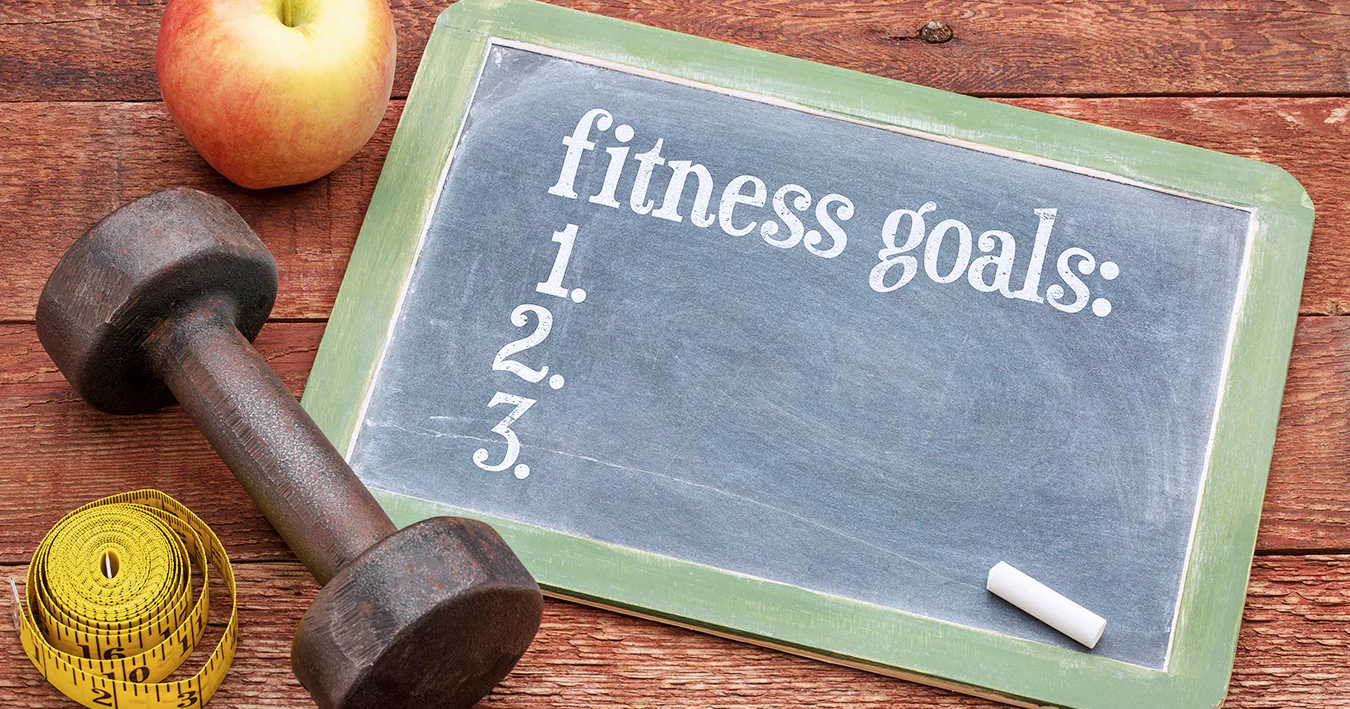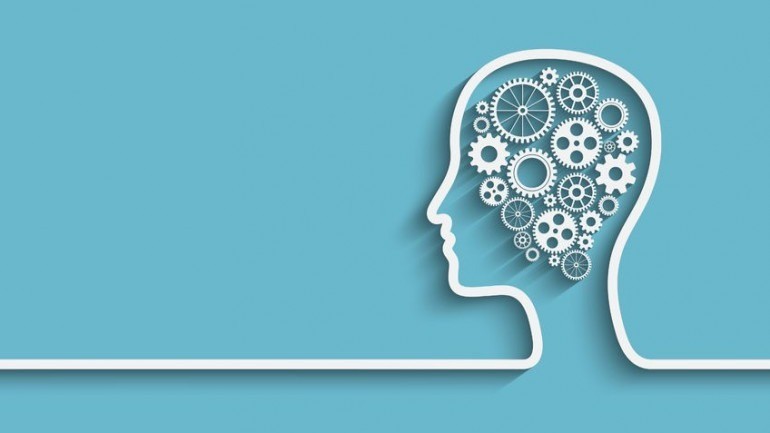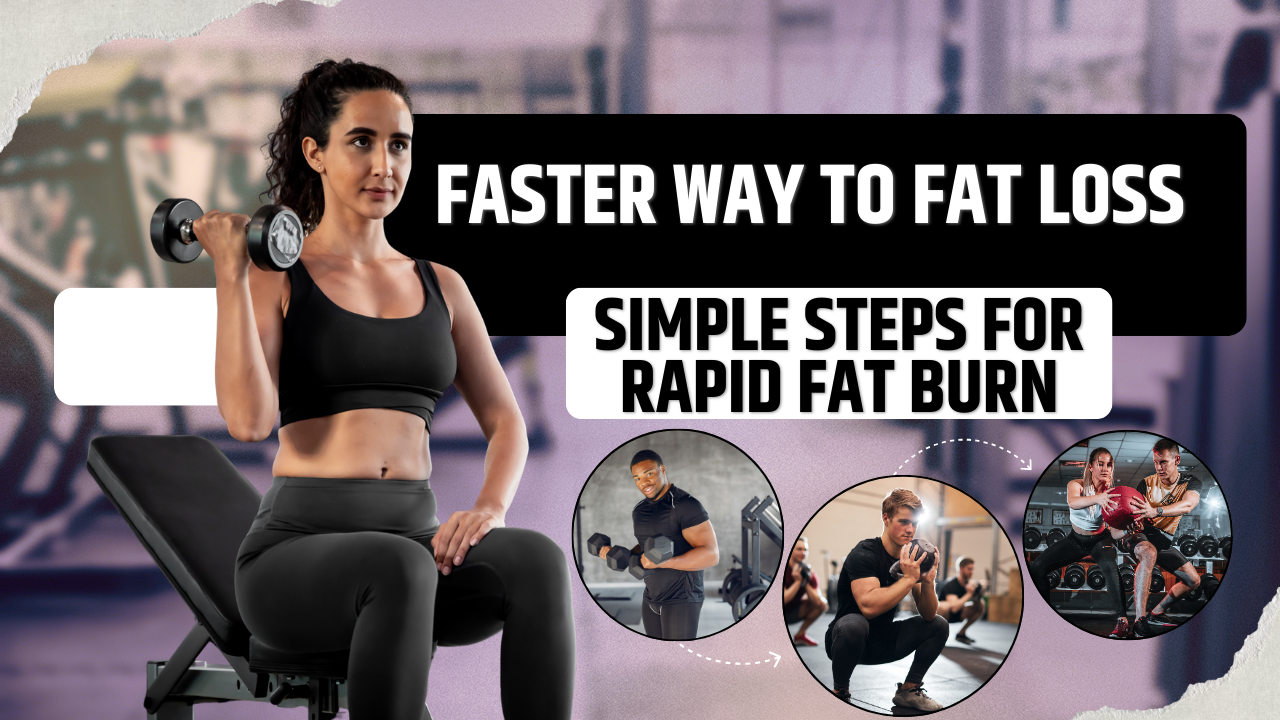Losing weight is a common goal, but the journey can often feel overwhelming. With so many diets, misleading advice, and products claiming fast results, it’s easy to get discouraged. True weight loss, however, happens when you understand your body, adopt healthy habits, and remain consistent.
To achieve lasting weight loss, focus on the science behind it. Weight loss isn’t just about cutting calories or exercising; it’s about balancing your diet and creating a routine that works for you. Understanding how your body burns fat and processes food is key to making sustainable changes.
This guide will help you avoid common mistakes, offering clear advice on nutrition, exercise, and healthy lifestyle choices. Whether you’re looking to lose a few pounds or make a major transformation, staying consistent and informed will help you reach your goals safely and effectively.
The Science of Weight Loss

Before beginning your weight loss journey, it’s essential to understand the science behind it. Knowing how your body burns fat, processes food, and responds to different diets and exercises will help you set realistic expectations. With this understanding, you can approach your weight loss goals with a clear, informed mindset, making the process more effective, sustainable, and manageable as you focus on long-term success rather than quick fixes.
Caloric Deficit: The Foundation of Weight Loss
At its core, weight loss happens when you burn more calories than you consume, creating what’s called a caloric deficit. This means your body is using more energy than it gets from food. When you’re in a caloric deficit, your body turns to its fat stores for energy, breaking down stored fat to fuel its functions. Over time, this process results in fat loss, which leads to weight reduction. Creating and maintaining this deficit is key to steady, sustainable weight loss.
Calories In vs. Calories Out: Calories are units of energy provided by food and beverages. Your body requires a certain number of calories daily for basic functions such as breathing, digestion, and muscle movement. This is known as your Total Daily Energy Expenditure (TDEE). To lose weight, your daily calorie intake must be lower than your TDEE, creating a deficit.
The Role of Your Metabolism
Your metabolism plays a crucial role in how your body burns and uses energy. One key part of metabolism is your Basal Metabolic Rate (BMR), which refers to the calories your body needs for basic functions like breathing and maintaining body temperature. A higher BMR means your body burns more calories even when at rest, making it easier to lose weight.
Many factors influence your BMR, such as age, sex, genetics, and muscle mass. As you age, your metabolism naturally slows down, which can make it harder to burn calories.
Muscle mass is another important factor. Individuals with more muscle tend to have a higher BMR because muscle tissue requires more energy to maintain than fat tissue. This means people with more muscle burn more calories even when they’re not actively exercising.
Physical Activity and Exercise
Physical activity is a key factor in weight loss, as it boosts the number of calories your body burns, helping to create a larger caloric deficit. Regular exercise supports fat loss while also benefiting your overall health. It enhances mood, increases energy levels, and improves cardiovascular health. Incorporating both aerobic and strength exercises into your routine can lead to more effective weight loss and provide lasting health benefits, making physical activity an essential part of a balanced weight loss plan.
Setting Realistic Weight Loss Goals

A key step in any weight loss journey is setting clear, realistic goals. While the idea of rapid weight loss can be tempting, lasting results require time and consistency. Focus on gradual progress rather than quick fixes, as this approach leads to healthier, more sustainable outcomes in the long run, making your efforts more effective.
SMART Goals: A Blueprint for Success
Setting SMART goals is an effective way to break down your weight loss journey into manageable steps. SMART stands for:
Specific: Clearly define your goal so you know exactly what you’re working towards. Instead of a general statement like “I want to lose weight,” make it more specific, such as “I want to lose 10 pounds in 2 months.” This gives you a clear target.
Measurable: Track your progress using measurable signs, like how many pounds you’ve lost, inches reduced, or changes in your body fat percentage. Measuring your progress helps you see how far you’ve come and stay motivated.
Achievable: Make sure your goal is realistic and possible for you to reach. Aim to lose 1-2 pounds per week, which is a healthy and attainable rate of weight loss. Trying to lose too much too quickly can be harmful.
Relevant: Your goal should connect to your bigger life plans, like improving your health, boosting your confidence, or feeling more energetic. When your goal is meaningful to you, it’s easier to stay committed.
Time-bound: Set a deadline for your goal. For instance, saying “I want to lose 10 pounds in 2 months” creates a clear timeline, helping you stay on track and focused.
Setting Incremental Goals
While long-term goals are important, breaking them into smaller, achievable milestones makes the journey less overwhelming. Instead of only focusing on the end result, celebrate the small victories, like losing 1 pound or sticking to your workout for a week. These moments keep you motivated and on track.
Nutrition: Fueling Your Body for Success
Your diet is a key factor in weight loss, as it directly affects the number of calories you consume and how your body functions. What you eat influences your metabolism, energy levels, and fat-burning process. Understanding the role of macronutrients—proteins, carbohydrates, and fats—and micronutrients—vitamins and minerals—can help you make healthier choices. By balancing these nutrients properly, you can support your body’s needs, manage hunger, and create a calorie deficit that leads to weight loss. Making informed food choices helps you stay on track and achieve your goals more effectively.
The Importance of a Caloric Deficit
As mentioned earlier, a caloric deficit is essential for weight loss. However, how you achieve that deficit is just as important. Starving yourself or following extreme diets can lead to nutrient deficiencies and may ultimately be unsustainable. A balanced diet that includes all three macronutrients—proteins, carbohydrates, and fats—is the best approach.
Macronutrients and Their Roles
Proteins: Protein is essential for building and repairing muscle tissue, especially if you’re doing strength training as part of your weight loss plan. It also helps you feel full longer, reducing the urge to overeat. Good protein sources include lean meats, fish, eggs, tofu, legumes, and dairy products.
Carbohydrates: Carbs provide your body with energy, making them important if you’re doing cardio or intense workouts. Not all carbs are the same, though. Focus on complex carbs like whole grains, vegetables, fruits, and legumes, which give long-lasting energy and are rich in fiber.
Fats: Healthy fats are vital for regulating hormones and helping your body absorb nutrients. Sources of healthy fats include avocados, olive oil, nuts, seeds, and fatty fish. Though fats are calorie-dense, they promote fullness and should be included in your diet, rather than avoided.
Micronutrients: Don’t Forget the Vitamins and Minerals
Micronutrients, such as vitamins and minerals, don’t directly contribute to calories but play a vital role in supporting metabolic processes, immune health, and overall well-being. These nutrients help your body function properly and maintain energy levels. To ensure you’re getting enough, focus on consuming a wide range of fruits, vegetables, and whole foods. A diverse diet will help you meet your micronutrient needs and support your health goals effectively.
Exercise: The Key to Accelerating Fat Loss
Exercise is a key element of any successful weight loss plan. It not only helps burn more calories but also improves cardiovascular health, boosts your mood, and increases muscle mass. Regular physical activity supports overall well-being and accelerates fat loss, making it essential for achieving and maintaining long-term weight loss goals.
Cardiovascular Exercise
Cardio, or aerobic exercise, is any activity that raises your heart rate and helps you burn calories, making it an important part of a weight loss plan. Popular cardio activities include walking, jogging, cycling, swimming, and dancing. To see consistent fat loss, it’s important to stay consistent with your workouts. Aim for at least 150 minutes of moderate-intensity cardio, such as brisk walking or cycling, or 75 minutes of vigorous-intensity cardio, like running or intense swimming, each week. Regular cardio helps burn calories and improves heart health, contributing to overall well-being.

High-Intensity Interval Training : (HIIT) is a workout method that alternates between short bursts of intense activity and periods of rest or low-intensity exercise. These high-intensity intervals push your body to work harder, burning a significant number of calories in a short amount of time. One of the main benefits of HIIT is its afterburn effect, meaning your body continues to burn calories even after the workout is finished, helping with fat loss. HIIT is efficient, effective, and can be easily adapted to different fitness levels, making it a great option for those looking to lose weight quickly and efficiently.
Strength Training: Building Lean Muscle
Strength training, also called resistance training, plays a vital role in building and maintaining muscle mass. Muscle tissue is metabolically active, meaning it burns more calories even at rest, helping you maintain a higher calorie burn throughout the day. Incorporating exercises like weightlifting or bodyweight movements such as squats, push-ups, and lunges can help you develop lean muscle, which in turn improves your body composition by reducing body fat.
For the best results, aim to include strength training in your routine at least 2-3 times per week. Focus on working all major muscle groups—legs, back, chest, shoulders, arms, and core—during these sessions. This approach not only enhances muscle strength and tone but also boosts metabolism, supporting overall weight loss and long-term fitness goals. Regular strength training is key to building a strong, toned body while improving overall health.
Flexibility and Recovery
Flexibility exercises and proper recovery are essential for a balanced fitness routine. Activities like yoga and stretching improve mobility, reduce muscle soreness, and help prevent injuries. Incorporating these into your routine allows you to recover effectively, stay consistent with your workouts, and maintain overall well-being. Prioritizing flexibility and recovery helps keep you injury-free, making it easier to stick with your fitness goals in the long run.
Overcoming Mental and Emotional Barriers

Weight loss is not only about the body but also the mind. Emotional eating, self-doubt, and setbacks can make the journey challenging. Developing a healthy mindset is essential for lasting success. By focusing on positive thoughts, staying motivated, and learning to cope with challenges, you can overcome mental obstacles. A strong mental approach supports consistency, helps you stay on track, and ensures you achieve your weight loss goals.
Creating a Positive Relationship with Food
Instead of seeing food as the enemy, view it as fuel for your body. Avoid labeling foods as “good” or “bad,” and focus on making healthier choices that nourish you. If you indulge in a treat, don’t feel guilty. Simply get back on track with your next meal, maintaining a balanced approach to your nutrition.
Stay Accountable and Seek Support
Support can make a huge difference in staying motivated. Whether it’s a friend, family member, or online community, having someone to hold you accountable can help you stay on course. Tracking your progress and celebrating small wins will keep you motivated.
Common Weight Loss Pitfalls to Avoid
Even with the best intentions, weight loss journeys often come with challenges. It’s common to face obstacles, from slow progress to emotional setbacks. Recognizing and understanding common mistakes can help you avoid them and stay on track. By being mindful of these pitfalls, you can maintain consistency and achieve sustainable results. Let’s explore some of the most frequent mistakes people make and how to overcome them for long-term success.
1. Unrealistic Expectations
While rapid weight loss may seem tempting, it’s not sustainable. Aim for steady, gradual weight loss of about 1-2 pounds per week. This approach allows your body to adjust and reduces the risk of regaining the weight later.
2. Relying on Fad Diets
Fad diets may promise quick results but are often unsustainable and can cause nutrient deficiencies. Rather than relying on restrictive diets, focus on developing healthy, balanced habits that support long-term success and can be maintained for lasting results.
3. Underestimating Calorie Intake
Many people don’t realize how much they’re eating, especially when it comes to hidden calories in snacks, drinks, and condiments. Track your food intake using an app or journal to ensure you’re staying within your caloric goal.
Sustainable Lifestyle Changes for Long-Term Success

True weight loss success comes from making lasting, sustainable changes. Focus on building healthy habits that you can maintain for life. By creating consistent, manageable routines, you set yourself up for long-term success and overall well-being.
Eat Whole, Unprocessed Foods: Focus on nutrient-rich, whole foods like fruits, vegetables, lean proteins, and whole grains. These foods are not only packed with vitamins and minerals but also help keep you fuller for longer, making it easier to manage portion sizes. They support overall health, improve digestion, and provide sustained energy throughout the day.
Stay Active: Find physical activities that you enjoy, such as hiking, cycling, dancing, or even walking. The key to staying active is consistency, so choose exercises that feel enjoyable and motivate you to stay on track. Regular physical activity boosts metabolism, promotes fat loss, and enhances your overall well-being.
Prioritize Sleep: Sleep is crucial for weight loss and overall health. Poor sleep can disrupt your metabolism, increase hunger, and lead to cravings for unhealthy foods. Aim for 7-9 hours of quality sleep each night to support your body’s recovery, hormonal balance, and fat-burning processes.
Manage Stress: Chronic stress can trigger overeating and unhealthy food choices. Managing stress is essential for maintaining a healthy weight. Incorporate relaxation techniques like meditation, deep breathing, or yoga into your routine to help calm your mind, reduce emotional eating, and promote overall well-being.
Conclusion
Weight loss is a long-term journey, not a quick destination. To succeed, focus on creating sustainable habits, such as eating a balanced diet, exercising regularly, and maintaining a positive mindset. These habits will help you achieve your goals while promoting overall health.
It’s important to remember that weight loss isn’t about seeking quick fixes or striving for perfection. Instead, it’s about making lasting changes that improve both your physical and mental well-being. By making gradual, consistent adjustments, you’ll set yourself up for long-term success.
Patience and consistency are key to reaching your weight loss goals. The process may take time, but staying committed to your healthy habits will lead to lasting results. Enjoy the journey, stay focused, and celebrate every small victory along the way. The progress you make will bring you closer to a healthier, happier life.
FAQs
1. How many calories should I eat to lose weight ?
To lose weight, you need to consume fewer calories than you burn. A good starting point is to create a caloric deficit of 500–750 calories per day, which can help you lose about 1–1.5 pounds per week. However, your daily calorie needs depend on factors like age, gender, activity level, and metabolic rate. Using a TDEE calculator or consulting a nutritionist can help you determine your ideal caloric intake.
2. What is the best exercise for weight loss ?
Both cardio and strength training are essential for effective weight loss. Cardiovascular exercise (like running, swimming, or cycling) burns calories, while strength training (like weightlifting or bodyweight exercises) builds muscle, which increases your metabolism and helps with fat loss. A combination of both is ideal for optimal results.
3. Can I lose weight without exercising ?
Yes, weight loss is primarily about creating a caloric deficit, which can be achieved through diet alone. However, exercise plays a crucial role in preserving muscle mass, improving metabolism, and boosting your overall health. It’s recommended to include some form of physical activity in your routine for long-term success and well-being.
4. How fast should I expect to lose weight ?
A healthy and sustainable weight loss rate is about 1–2 pounds per week. Losing weight too quickly can lead to muscle loss, nutritional deficiencies, and an increased risk of regaining the weight. Focus on making gradual lifestyle changes, rather than opting for extreme diets or rapid weight loss methods.
5. What are the best foods for weight loss ?
The best foods for weight loss are whole, nutrient-dense foods such as lean proteins (chicken, fish, tofu), vegetables, fruits, whole grains, and healthy fats (avocados, nuts, olive oil). These foods are not only low in calories but also packed with vitamins, minerals, and fiber, which support metabolism, reduce hunger, and keep you full for longer.

